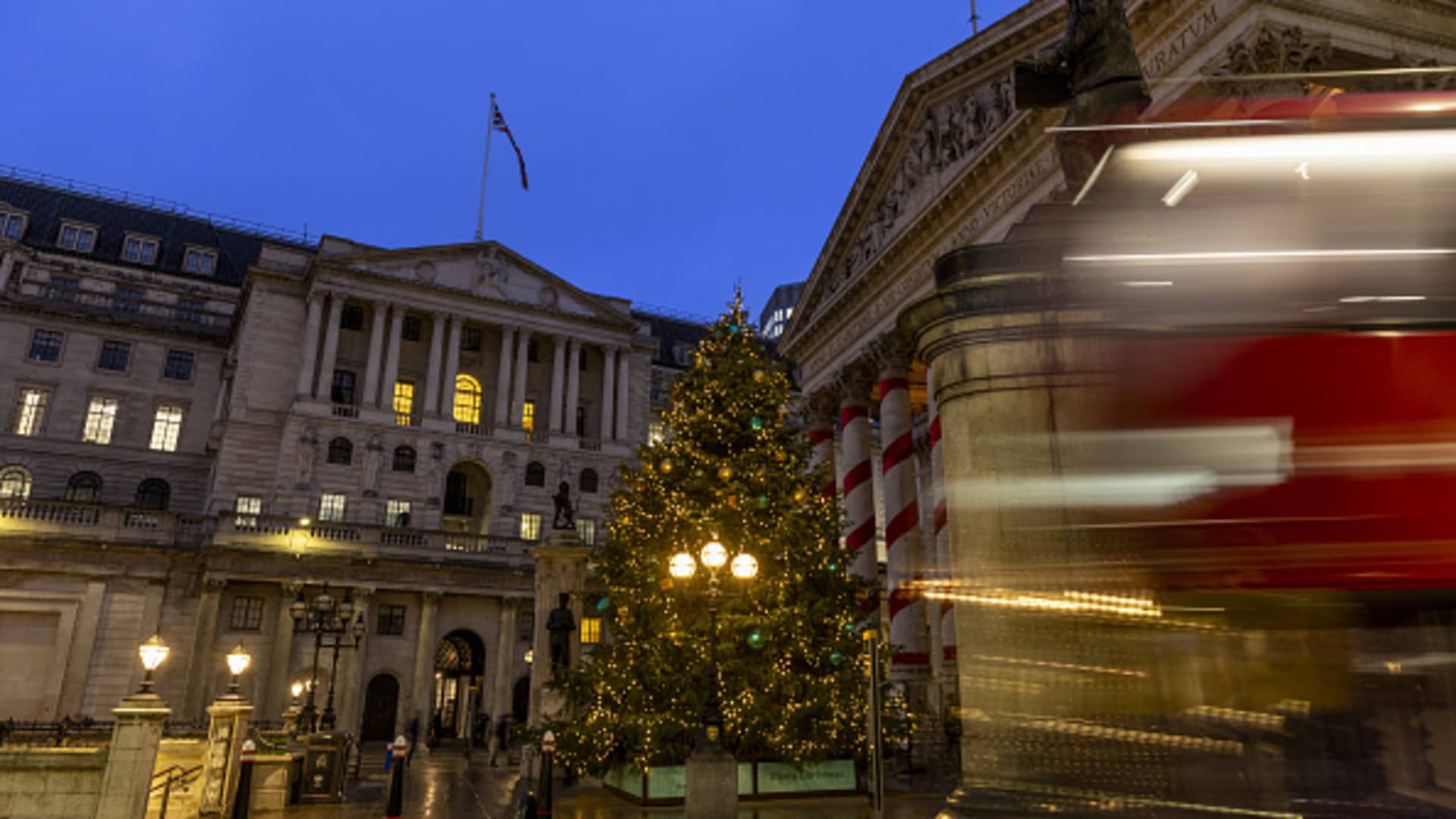Key Points
- U.K finance minister is expected to make inflation-dampening measures her “rabbit out of the hat” in Wednesday’s historic budget.
- But a plethora of tax-raising measures may not resolve the underlying questions regarding the U.K.’s fiscal position.
- The fiscal fallout from the budget could prompt more interest rate cuts, investment strategists told CNBC.
Strategists have revealed what they’re expecting in UK Finance Minister Rachel Reeves’ Budget, including her “rabbit out of the hat.” For Laura Cooper, global investment strategist at Nuveen, one key thing to watch is the U.K.’s interest rate trajectory. The fiscal consolidation in critical statement, to be delivered on Wednesday at noon local time, will likely “warrant more acute growth pressures in the U.K. economy,” she said. Speaking to CNBC’s “Europe Early Edition” on Tuesday, Cooper said that this will “prompt the Bank of England to have to cut rates more aggressively than what markets are pricing.” The U.K.’s central bank base rate currently stands at 4%, with its Monetary Policy Committee expected to lower the rate by 25 basis points at its next meeting on Dec. 18. But amid reports that the U.K.’s Office for Budget Responsibility will cut the country’s growth outlook for 2026 and over the next five years, growth has come under ever closer scrutiny. “With markets pricing in just around two Bank of England rate cuts by the middle of next year we think there’s scope for that to be further increased to about three cuts by the middle of next year, bringing that terminal rate to 3.25%,” Cooper said. GBP= YTD mountain Pound sterling Cooper said growth pressures will likely mean continued weakness — or at least more range-bound trading — in sterling, which is now at its weakest level against the dollar since April. “It’s very hard to see a catalyst for a renewed rally in sterling,” she added. The British currency acted as a “pressure valve” following initial reports of likely income tax rises, she said, adding that it has yet to recover despite Reeves walking back personal tax hikes. “What we are seeing is this embedded risk premium within the currency,” Cooper said. Against this backdrop, the best risk-reward opportunities in U.K. gilts in the “belly of the curve” — largely in the 3-year to 7-year tenors — which, Cooper said, were trading “well above” what was justified by fundamentals. ‘A rabbit out of the hat’ Sanjay Raja, chief U.K. economist at Deutsche Bank, predicted that inflation-dampening measures would prove to be the Chancellor’s “rabbit out of the hat.” “We expect 40 basis points of disinflationary measures,” Raja told CNBC’s “Squawk Box Europe” on Tuesday. “It opens the path to rates cuts in December and potentially further out into 2026.” Raja said the Budget will include a “whole plethora” of tax-raising measures, with pensions, employer salary sacrifice schemes, the gambling industry and landlords’ national insurance contributions all falling within the Chancellor’s crosshairs. “This will be a historic budget,” he added, calling it the U.K.’s “third biggest tax-raising budget” since World War II. With the U.K. one of the few G7 countries that is consolidating — raising taxes and bringing down the deficit — Raja said political risk will rise following the budget, and fiscal concerns will linger on into 2026. Jim O’Neill, former chairman of Goldman Sachs Asset Management and a member of the U.K. House of Lords, said he is hoping for “a couple of surprises” in Wednesday’s budget, but added he “doesn’t have high expectations.” “They are going to make quite an effort to do some things to make sure that energy and food prices might be under less upward pressure, or in fact possibly down a bit, in order to try and get consumer price inflation to be weaker than people are currently forecasting, in the belief and hope that it would lead to lower interest rates than the Bank of England and the markets have priced,” he said.





